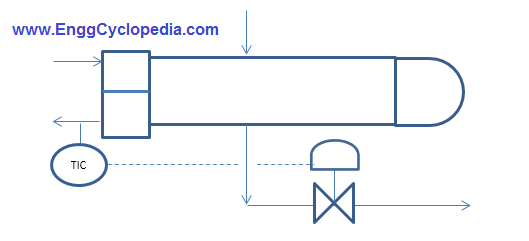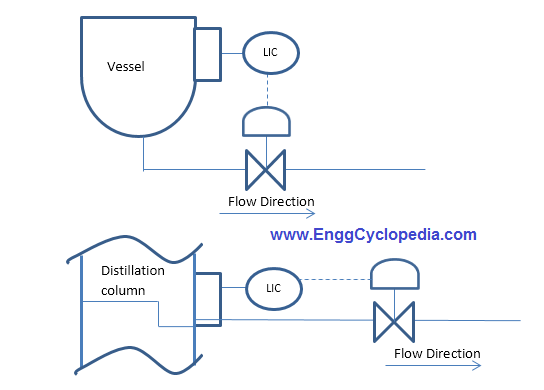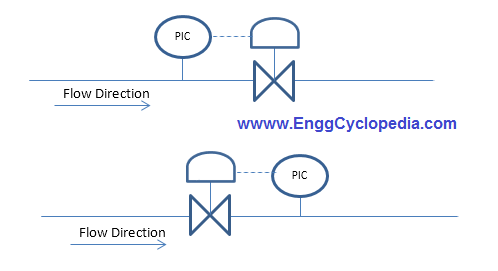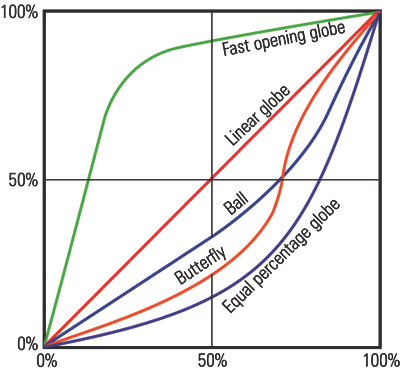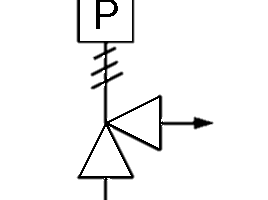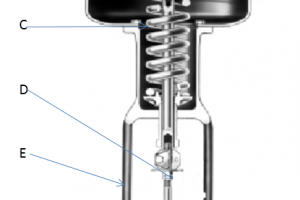Control valves are devices used in process control loops to regulate the temperature, pressure, level or flow which is required for the efficient and safe operation in process industries. Control valves are an integral part of process control loops. The control valve adjusts the flow of a fluid such as gas, steam, or water to compensate for disturbances in load and keep the process variable as close to the desired set point value as possible. Details of how different types of control valves work are explained in this post.
Table of content:
1. Working Mechanism of Control Valves
2. How Do Flow Control Valves Work?
3. How Do Temperature Control Valves Work?
4. How Do Level Control Valves Work?
5. How Do Pressure Control Valves works?
Working Mechanism of Control Valves
The control valves in process control loops use sensors, transmitters, controllers and final control elements to maintain the process variable close to the desired set point.
- Sensors are used for measuring process variables such as the temperature or pressure of the process or the level in the tank.
- The sensor sends this measured parameter to the controller by signal.
- The controller compares this measured variable with the set point. If the measured variable deviates from the desired set point, the controller will send the signal to the final control element.
- Actuators are used as the final control element to adjust the fluid flow such that process variable reaches the desired set point value.
How Do Flow Control Valves Work?
Flow control valves are essential components in process industries for maintaining the flow rate of fluids. They act as adjustable barriers and are used to regulate the flow rate within a specified range. Flow control valves are typically located at various points in a system and can be fully open, completely closed, or positioned anywhere in between to achieve the desired flow rate.
They work by receiving a control signal from a controller, comparing the actual flow rate with the desired setpoint, and adjusting the valve position accordingly. This continuous monitoring and adjustment ensure precise control over the flow rate, contributing to efficient and safe operations in process industries. Check more detailed illustration on how flow control valves work.
How Do Temperature Control Valves Work?
Temperature control valves utilize a feedback control loop arrangement to maintain a desired setpoint temperature. They consist of a temperature sensor that monitors the fluid temperature and sends feedback to the valve. The valve actuator adjusts the valve position based on this feedback to regulate the flow of heating or cooling medium.
If the temperature deviates from the setpoint, the actuator opens or closes the valve accordingly. This allows the valve to decrease or increase the heat supply to bring the temperature back to the desired setpoint. Temperature control valves are commonly used in heat exchangers and operate by continuously comparing and adjusting the actual temperature with the setpoint temperature. Explore working of temperature control valve in the given post.
How Do Level Control Valves Work?
Level control valves are essential in process industries for maintaining specific liquid levels in equipment such as vessels and distillation columns. They regulate the flow of liquid into and out of the system to ensure efficient and safe operation.
These valves utilize floating mechanisms or diaphragms to adjust the valve position based on the liquid level in the tank. When the level rises above the desired set point, the valve closes to restrict flow, and when it falls below the set point, the valve opens to allow flow until the desired level is reached. Level control valves can be found in various liquid outlet lines throughout the process industry. Click the button to explore how level control valves work.
How Do Pressure Control Valves works?
Pressure control valves are used in the process industry to regulate and maintain the pressure of a fluid within a specified range. They work by continuously sensing the downstream pressure and adjusting the valve opening accordingly.
If the pressure exceeds the set point, the valve restricts the flow, reducing the pressure. Conversely, if the pressure decreases, the valve opens up to allow more fluid, increasing the pressure. This control mechanism ensures the desired pressure level is maintained, compensating for fluctuations in upstream pressure. Pressure control valves are essential for the safe and efficient operation of fluid systems, preventing equipment damage and ensuring optimal performance. Check more detailed post on how pressure control valves work.

